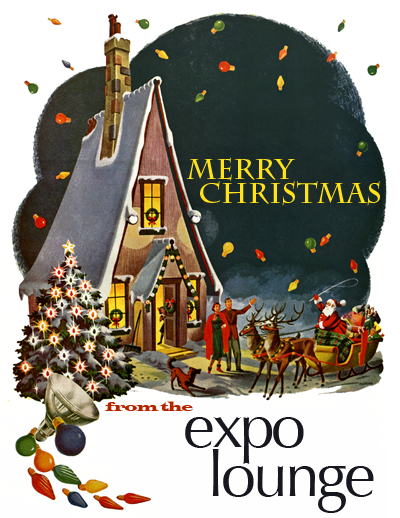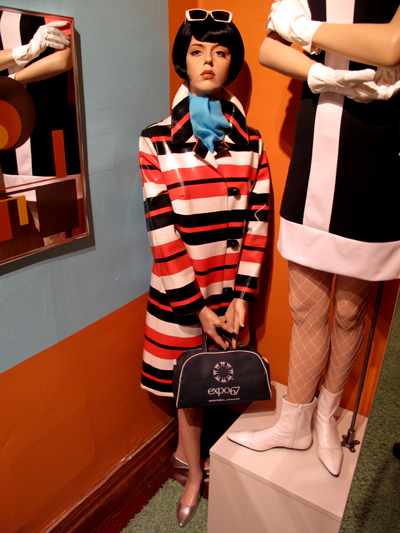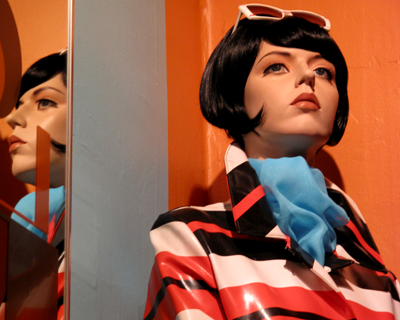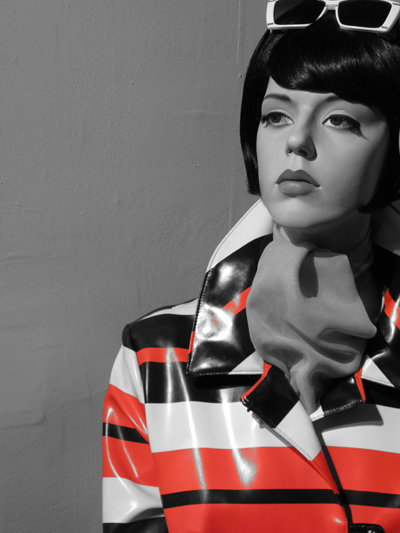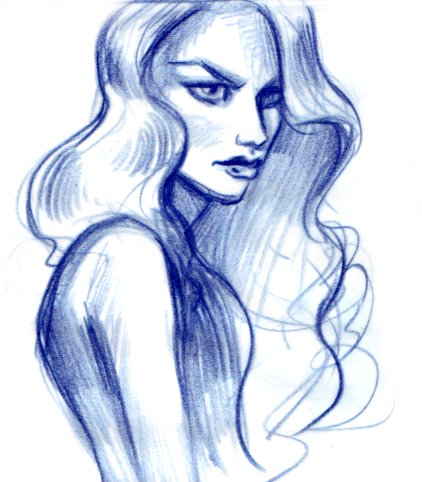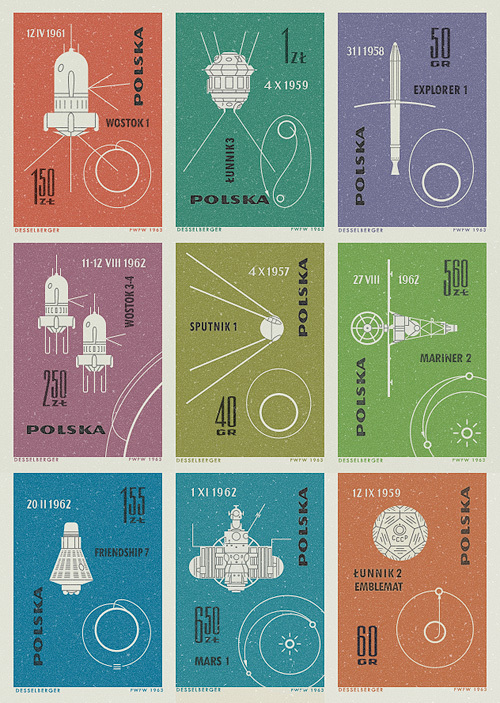
Wednesday, December 31, 2008
Wednesday, December 24, 2008
Monday, December 22, 2008
Retro Recipe: Party Sandwich Loaf
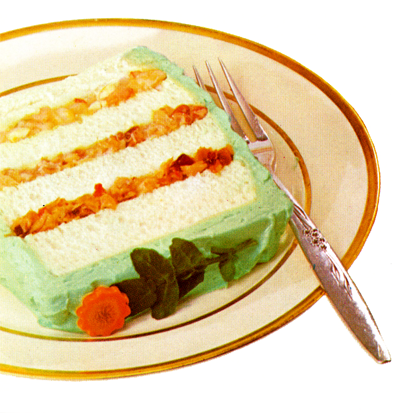 Wow your yuletide guests this year with a wonderful "Party Sandwich Loaf"!
Wow your yuletide guests this year with a wonderful "Party Sandwich Loaf"!Party Sandwich Loaf
Prepare fillings (below). Trim crusts from 1 loaf unsliced sandwich bread. Cut loaf horizontally into 4 equal slices. Spread one side of 3 slices with softened butter. Place 1 bread slice, buttered side up, on serving plate. Spread evenly with Shrimp Salad Filling. Top with second bread slice and spread evenly with Cheese-Pecan Filling. Top with third slice and spread evenly with Chicken-Bacon Filling. Top with remaining bread slice. Frost top and sides with Cream Cheese Frosting (below). Chill until frosting has set, about 30 minutes. Wrap loaf with a damp cloth and continue to chill 2-1/2 hours, or overnight. 12 to 14 servings.
Shrimp Salad Filling
• 1 hard-cooked egg, finely chopped
• 1 can (4-1/2 oz.) broken shrimp, rinsed and drained
• 2 tbsp. finely chopped celery
• 1 tbsp. lemon juice
• 1/8 tsp. salt
• Dash pepper
• 3 tbsp. mayonnaise
Mix all ingredients.
Cheese-Pecan Filling
• 1 pkg. (3 oz.) cream cheese, softened
• 1 cup finely chopped toasted pecans
• 1 can (8-3/4 oz.) crushed pineapple, well drained
Mix all ingredients.
Chicken-Bacon Filling
• 8 slices bacon, crisply fried and crumbled
• 1 cup finely chopped cooked chicken
• 1/4 cup mayonnaise
• 1 tbsp. finely chopped pimiento
• 1/4 tsp. salt
• 1/8 tsp. pepper
Mix all ingredients.
Cream Cheese Frosting
• 2 pkg. (8 oz. each) cream cheese, softened
• 1/2 cup light cream
• Green food coloring
Mix cheese and cream thoroughly. Add a few drops food coloring to tint frosting a delicate green.
 image and recipe source: flickr.com
image and recipe source: flickr.comSunday, December 21, 2008
A Very Special Gift
 For the 40th anniversary of Expo 67, Montreal-based artist, designer (and good friend of mine) DC Hillier decided to commemorate the world's fair by crafting a unique light sculpture. Called "The Anniversary Light" / "Lumière d'anniversaire", DC used recovered materials from an actual Expo 67 sculpture for one of his own works.
For the 40th anniversary of Expo 67, Montreal-based artist, designer (and good friend of mine) DC Hillier decided to commemorate the world's fair by crafting a unique light sculpture. Called "The Anniversary Light" / "Lumière d'anniversaire", DC used recovered materials from an actual Expo 67 sculpture for one of his own works.In 1967, a piece by renowned Quebec artist Jean Cartier called "La Giboulée" / "Sudden Shower" was on display in the Cité du Havre sector of Expo. Essentially a fountain, large glass disks graced the top of its spires.
Unfortunately, the original Cartier sculpture has since been left abandoned.
In 2007, DC Hillier was asked by one of the city's municipal committees to do an evaluation of the sculpture's condition. He was given permission to recuperate broken pieces of the once beautiful disks. Cleaned and polished, these thick glass pieces would become the main components of his anniversary sculpture, together with pre-ban Brazilian rosewood (dating from the same era) used for the base.
Together with the prototype, there are only 2 anniversary sculptures in existence. DC gave me one of them as a Christmas gift this year...
It is a gift I will cherish forever, one of the highlights of my Expo collection!
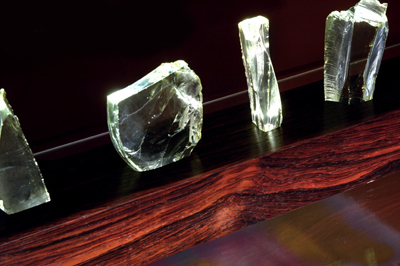

 images: (1-3) DC Hillier
images: (1-3) DC Hillier(4) Bill Dutfield
Friday, December 12, 2008
Saturday, November 29, 2008
Sesame Street's Funky Chimes
This is possibly my favorite song, ever.
Created sometime in the early 70's, this musical interlude was featured at the end of Sesame Street episodes. Nicknamed "Funky Chimes", the tune was placed between the show's final credits and the PBS identification.
When Funky Chimes was retired in the early 1990's, I thought I'd never hear my beloved wah-wah electric guitar and tubular bells ever again. With the advent of the Internet (where you can truly find anything), I've stumbled upon a high quality extended version, created by Youtube user roboshuffle...
Needless to say, I love it!
I've extracted the audio and converted it to mp3 format, so I can enjoy Funky Chimes on my iPod whenever I want...
Monday, November 24, 2008
Sunday, November 16, 2008
U.S. Hostess Raincoat and Handbag
 As a collector of Expo 67 paraphernalia, I've always dreamt of actually owning something that a hostess wore.
As a collector of Expo 67 paraphernalia, I've always dreamt of actually owning something that a hostess wore.Well... dreams do come true!
I regularly peruse eBay's Expo 67 auctions. A few weeks ago, I noticed the official raincoat and handbag worn by U.S. pavilion hostesses up for auction.
I watched that auction day in and day out. I was prepared to bid whatever it would take to get this ultra-rare item...
Lucky for me, it only took $33.00 (U.S.)!
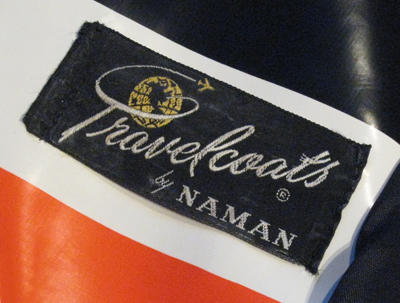 The coat's label tells us it was made by Travelcoats by Naman.
The coat's label tells us it was made by Travelcoats by Naman.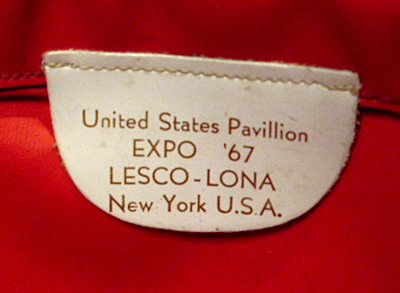 The label inside the handbag identifies it as an Expo 67 artifact.
The label inside the handbag identifies it as an Expo 67 artifact.A hostess in her raincoat.
images: (1, 2, 3) author's own
(4) images: www.canada.com/montrealgazette
Thursday, November 13, 2008
Monday, November 3, 2008
The Memories of Angels
I'm totally excited about this fab new film from the National Film Board.
The Memories of Angels is a stunning portrait of Montreal in the 1950's and 60's, in "sights, sounds and music". Culled from vintage NFB stockshots, the film lies somewhere between poetry, documentary and essay. Without narration, this film effectively paints the portrait of a city that underwent massive transformations in the years leading up to, and during, Expo 67.
Like a DJ mixing music, director Luc Bourdon skillfully "remixed" scenes of a bygone city: busy streets of people, motor cars and streetcars, children playing in yards and lanes, bustling department stores during Christmas, panoramic views of Expo 67... to name but a few. Aesthetically interesting to me was the contrast of black and white and color footage.
The Memories of Angels is playing at Ex-Centris until November 13, 2008.
The Memories of Angels is a stunning portrait of Montreal in the 1950's and 60's, in "sights, sounds and music". Culled from vintage NFB stockshots, the film lies somewhere between poetry, documentary and essay. Without narration, this film effectively paints the portrait of a city that underwent massive transformations in the years leading up to, and during, Expo 67.
Like a DJ mixing music, director Luc Bourdon skillfully "remixed" scenes of a bygone city: busy streets of people, motor cars and streetcars, children playing in yards and lanes, bustling department stores during Christmas, panoramic views of Expo 67... to name but a few. Aesthetically interesting to me was the contrast of black and white and color footage.
The Memories of Angels is playing at Ex-Centris until November 13, 2008.
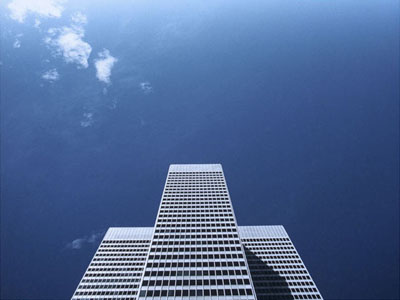 Place Ville Marie was only one of many grand scale projects in the 1960's.
Place Ville Marie was only one of many grand scale projects in the 1960's. St-Catherine street's vegas-style neon signs.
St-Catherine street's vegas-style neon signs.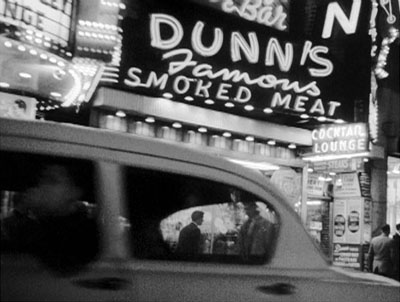 Dunn's, a smoked-meat institution in Montreal.
Dunn's, a smoked-meat institution in Montreal. Québecois legend Félix Leclerc with a young Dominique Michel.
Québecois legend Félix Leclerc with a young Dominique Michel.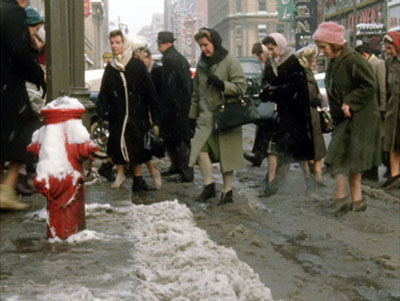 Think that snow removal was better in the good old days? Think again!
Think that snow removal was better in the good old days? Think again!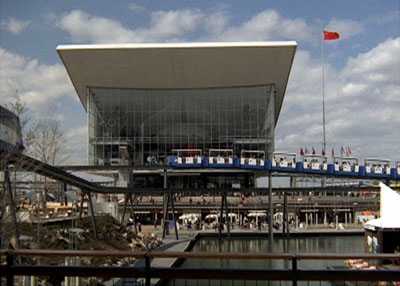 Montreal's shining moment in the 1960's: Expo 67.
Montreal's shining moment in the 1960's: Expo 67.images: nfb.ca
Saturday, November 1, 2008
Friday, October 31, 2008
Sunday, October 5, 2008
The Hockey Night in Canada Theme
 I'm not a hockey fan, but I adore the Hockey Night in Canada theme.
I'm not a hockey fan, but I adore the Hockey Night in Canada theme.The song was written for the CBC in 1968 by Dolores Claman. A classically trained composer, Claman had written a number of successful jingles (including the music for A Place to Stand, the Academy-award winning short film shown at the Ontario Pavilion at Expo 67.)
Having never actually seen a hockey game in person, Claman said that she wrote the tune imagining "Roman gladiators wearing skates".
"It just arrived in my head," she recalled years later.
Since the song was originally classified as an advertising jingle, Claman only received a one-time creative fee of $800. A recent messy court case saw the Canadian Broadcasting Corporation lose the rights to what many consider "Canada's second national anthem".
CTV, Canada's largest privately owned network, has acquired the broadcast rights to the song in perpetuity. A new, classic rendition has recently been unveiled, recorded by 54 members of the Toronto Symphony Orchestra.
Brassy yet loungy, the fab new recording pays hommage to the original 1968 version... Needless to say, I love it!
 images: (top) cbc.ca
images: (top) cbc.caSunday, September 28, 2008
The Pavilion of Mexico
 The Mexican pavilion at Expo 67 was a striking white structure located at water's edge on Île Notre Dame.
The Mexican pavilion at Expo 67 was a striking white structure located at water's edge on Île Notre Dame.The pavilion's exterior was based on traditional architectural forms and reflected 2 aspects of Mexico. One part resembled an enormous seashell, recalling the country's coastline, while the remainder (where the pavilion's entrance was found) was designed as a barren hill, complete with Mayan temple made of ancient stones, representing the arid Yucatan climate.
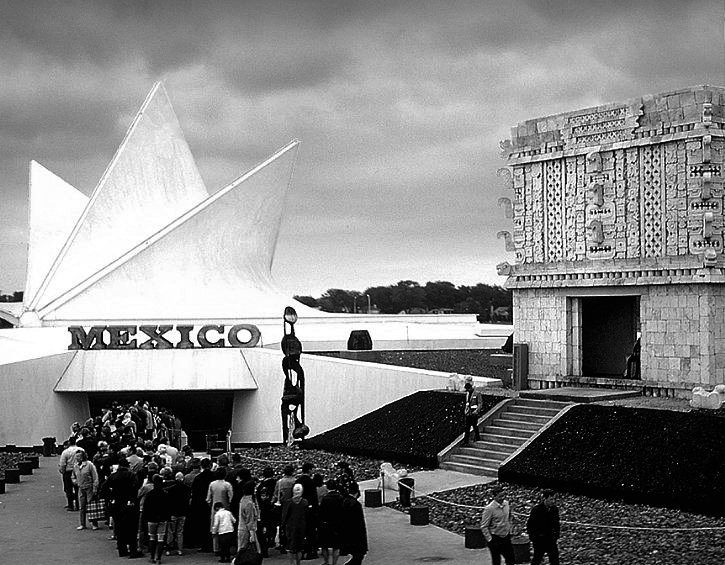 The theme chosen for the pavilion was "The Mexican and His World".
The theme chosen for the pavilion was "The Mexican and His World".A large mural by Mexican artist Rufino Tamayo immediately greeted the visitor entering the pavilion. Measuring an imposing 42 feet high by 15 feet long, the work symbolized the Mexican people freeing themselves from myths and constrictive nationalism, reaching out into universality.
A collection of photographs of Mexico's natural beauty, history, traditions, social progress and industrialization was presented in the pavilion's first hall. Large images of mines, farms, and beaches showed Mexico's resources, rich in number and variety. A display of vegetable exhibits reminded the visitor that it was Mexico that introduced corn, chocolate, the tomato and the pimento to the world. Also in this hall, a model of the Piramide de Los Nichos, with its 365 alcoves studding its 4 sides, was surrounded by statues of gods of pre-Columbian mythology.
 At the threshold of the pavilion's largest hall, a statue of an Olmec prince greeted the visitor with an invitation to explore the worlds of the Mayas, Toltecs and Aztecs. Stone figures embodied fascinating yet disturbing memories of dead civilisations. Also on display in this hall, a rich collection of pre-Columbian art, as well as religious and secular art objects of New Spain, dating back to the 16th century.
At the threshold of the pavilion's largest hall, a statue of an Olmec prince greeted the visitor with an invitation to explore the worlds of the Mayas, Toltecs and Aztecs. Stone figures embodied fascinating yet disturbing memories of dead civilisations. Also on display in this hall, a rich collection of pre-Columbian art, as well as religious and secular art objects of New Spain, dating back to the 16th century. A painted wooden sculpture of Christ, typical of the Mexican baroque period.
A painted wooden sculpture of Christ, typical of the Mexican baroque period.Full sized replicas of the 3 Bonampak chambers, featuring the most ancient frescos in the Americas, evoked the grandeur of the Mayan civilization. These vast works in tones of red, yellow, ochre and green covered the inside and outside walls; a reliable portrayal of the period's customs, clothes and events, and the finest examples of classic Mayan painting.
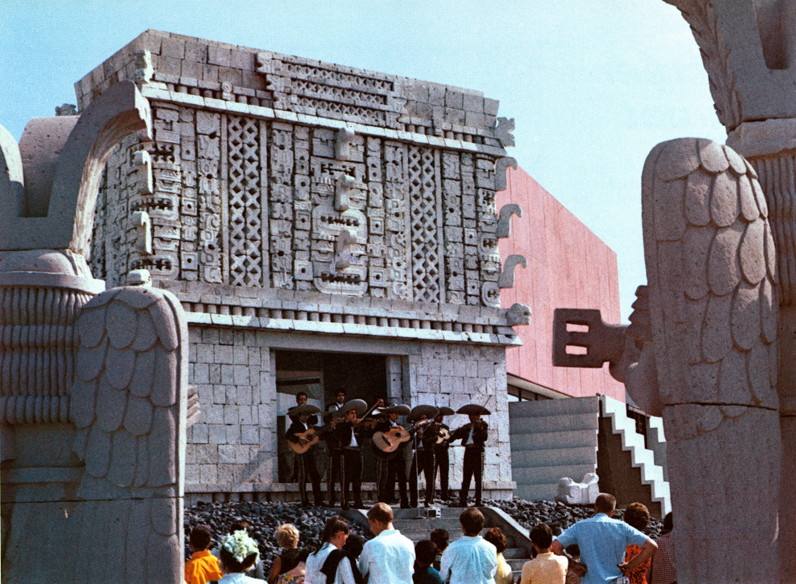 Nearby, the serene beauty of basalt masks inlaid with mosaics and terra cotta funerary statuettes sharply contrasted the rich Bonampak murals. Also on display was a colossal caryatid, one of eight that once supported a temple roof dedicated to the planet Venus, in the sacred city of Tula. An 18th century baroque altar of gold and silver was brought in from Tepotzotlan.
Nearby, the serene beauty of basalt masks inlaid with mosaics and terra cotta funerary statuettes sharply contrasted the rich Bonampak murals. Also on display was a colossal caryatid, one of eight that once supported a temple roof dedicated to the planet Venus, in the sacred city of Tula. An 18th century baroque altar of gold and silver was brought in from Tepotzotlan.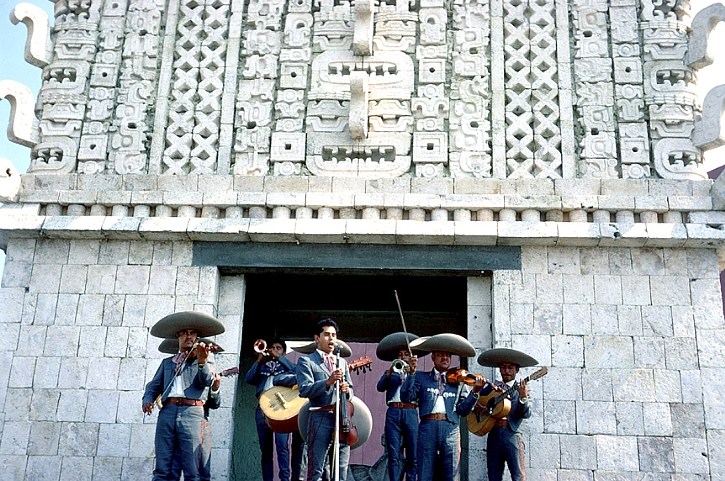 In yet another hall, an important collection of paintings done in 1966 by young Mexican artists illustrated the theme of "The Mexican Facing the World". The works portrayed mankind's relation with Nature, Love, the Community, the Universe and Infinity. A kinetic sculpture came to life at the slightest breath of air, while a composition of metal shapes was set in motion magnetically over a black marble base.
In yet another hall, an important collection of paintings done in 1966 by young Mexican artists illustrated the theme of "The Mexican Facing the World". The works portrayed mankind's relation with Nature, Love, the Community, the Universe and Infinity. A kinetic sculpture came to life at the slightest breath of air, while a composition of metal shapes was set in motion magnetically over a black marble base.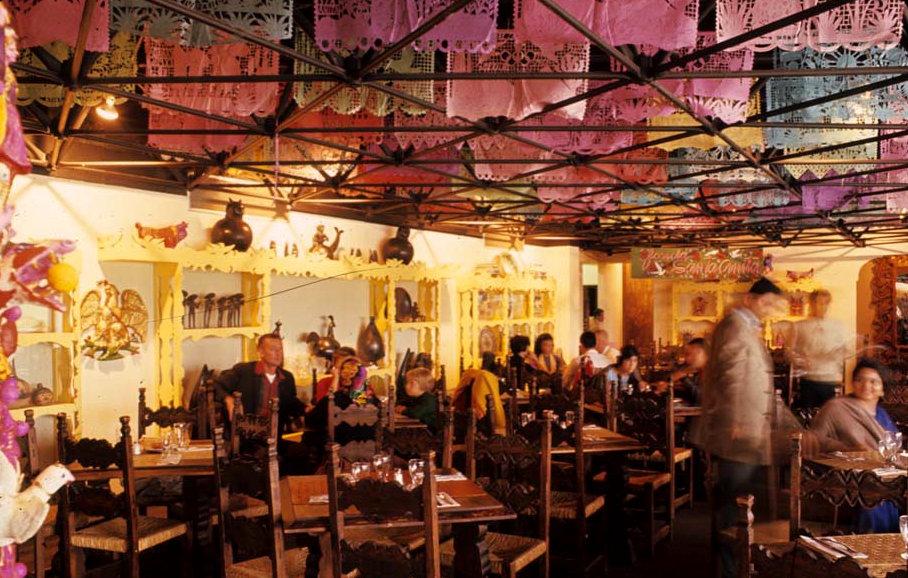 The folk art decor of the Mexican pavilion restaurant.
The folk art decor of the Mexican pavilion restaurant.The pavilion's Acapulco bar and adjoining Santa Anita restaurant served typical Mexican fare. Here visitors could admire folk art decor while sipping tequila and sampling dishes such as giant shrimps in pepper sauce, or fish stuffed with almonds... all to the nostalgic guitars and trumpets of the popular mariachi band.
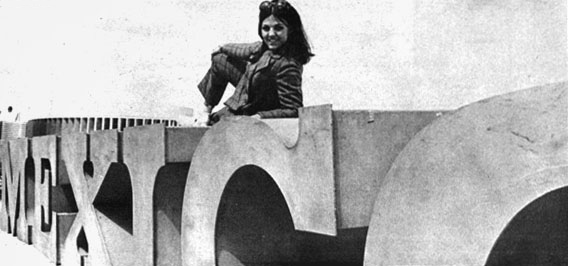 Michele Richard, posing coquettishly at the Mexican pavilion.
Michele Richard, posing coquettishly at the Mexican pavilion.images: (1-4-5-8) personal collection
(2-3-6) expo67.ncf.ca
(7) digital.library.mcgill.ca/expo-67
Friday, September 12, 2008
Thursday, September 4, 2008
Expo 2020
 An interesting little news story has been circulating the last few days.
An interesting little news story has been circulating the last few days.Benoit Labonté, opposition leader at Montreal city hall, upcoming candidate for Montreal mayor (and my new hero) announced at a press conference this week that he has taken steps to try to bring Expo 2020 to the city.
In a dramatic stunt worthy of Jean Drapeau himself, Labonté held up two distinctive red Expo 67 passports and said:
"What do the Expo 67 passports evoke?"
"It evokes Montreal's greatness, the moment when we thought everything was possible in Montreal, that the future belonged to us."
"But mostly, it evokes a great sense of collective pride, probably the greatest in Montreal in the 20th century."
A world exhibition in 2020 (over 50 years after Expo 67) would indeed rekindle that old Expo magic, and the economic boom that comes with it. Labonté has already created a non-profit organization to work on Montreal's bid for the world's fair. Bids officially open in 2011.
In another Drapeau-esque moment, Labonté insisted that the question wasn't "Can we afford it?" but "Can we afford not to do it?"
In another Drapeau-esque moment, Labonté insisted that the question wasn't "Can we afford it?" but "Can we afford not to do it?"
Expo Lounge fully endorses the Expo 2020 idea.
Thursday, August 28, 2008
Elvis and Priscilla Barbie Dolls
 Elvis Presley married Priscilla Beaulieu on May 1, 1967.
Elvis Presley married Priscilla Beaulieu on May 1, 1967.The private ceremony was held in one of the most grandiose suites at the Aladdin Hotel, in Las Vegas. The bride wore a beaded white gown, with a tiara mounted on her (fab) dyed black beehive. Elvis wore a black brocade suit. Priscilla's sister Michelle was her maid of honor, while Memphis Mafia members Marty Lacker and Joe Esposito acted as Elvis' best men.
 Upon Elvis' request, the word "obey" was removed from the wedding vows. Despite the couple's notoriety, the ceremony took all of 8 minutes to conclude!
Upon Elvis' request, the word "obey" was removed from the wedding vows. Despite the couple's notoriety, the ceremony took all of 8 minutes to conclude!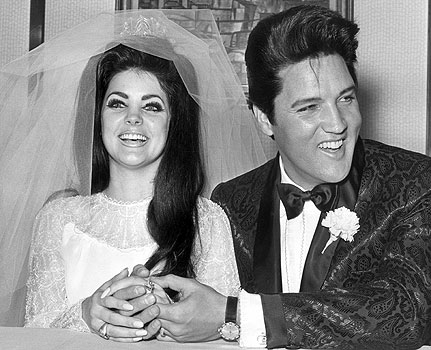 Unfortunately, the marriage didn't last long. The couple were seperated in 1972 and officially divorced in 1973.
Unfortunately, the marriage didn't last long. The couple were seperated in 1972 and officially divorced in 1973.Mattel (the makers of the Barbie doll) have just released a Graceland-approved box set to commemorate Elvis and Priscilla's wedding. Earlier this month, select fans gathered for the dolls' unveiling at Elvis' defunct home (now a museum) in Memphis, Tennessee.
These die-hard fans were treated to slices of wedding cake and orange juice served in champagne glasses.
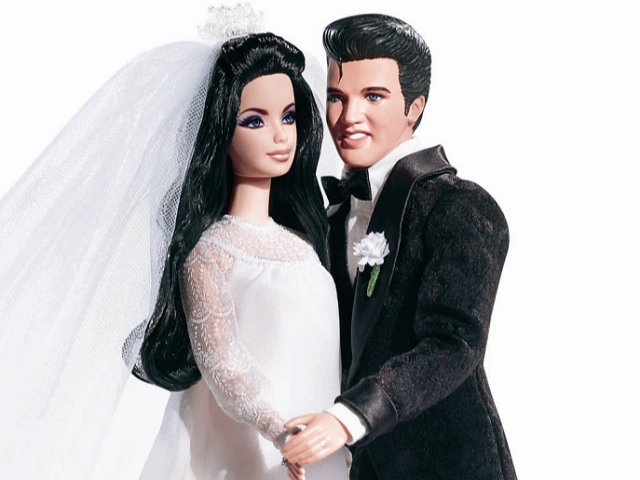 images: (1-2) source unknown
images: (1-2) source unknown(3) virginmedia.com
(4) source unknown
Sunday, August 17, 2008
Thursday, August 14, 2008
Friday, August 8, 2008
Concordia Bridge and Pont des Îles
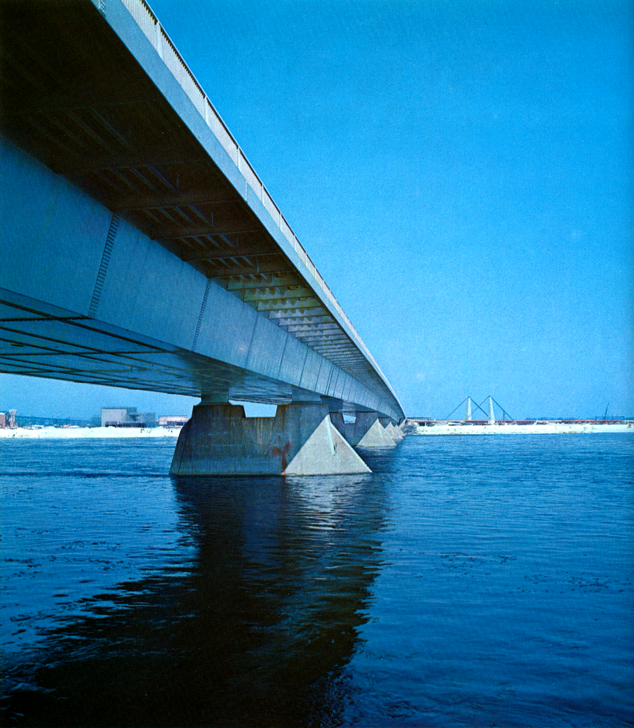 Pavilions were not the only noteworthy architecture at Expo 67. Concordia Bridge and Pont des Îles were stunning feats of engineering, playing key roles before and during Montreal's world's fair.
Pavilions were not the only noteworthy architecture at Expo 67. Concordia Bridge and Pont des Îles were stunning feats of engineering, playing key roles before and during Montreal's world's fair.Concordia Bridge
Concordia Bridge was inaugurated on October 21, 1965, at the height of the Expo 67 building boom. Originally called Pont des Peuples and then Pont des Nations, the name Concordia was finally decided upon; "Concordia" being the goddess of harmony in Greek Mythology... a fitting tribute to Expo's overall theme.
 Concordia Bridge provided rapid access to Île Sainte-Hélène from Cité du Havre (formerly known as Mackay Pier); where Expo 67's main entrance was located.
Concordia Bridge provided rapid access to Île Sainte-Hélène from Cité du Havre (formerly known as Mackay Pier); where Expo 67's main entrance was located.One of the world's longest bridges of its kind, and the second to be built in North America, Concordia Bridge offered users a striking view of downtown Montreal and the Expo site. The lack of apparent supporting structure made the orthotropic bridge a masterpiece of industrial design.
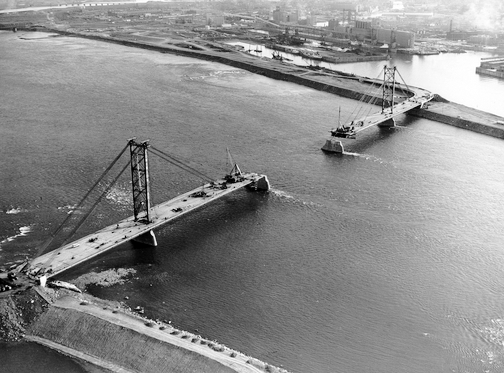 Like Expo 67 itself, Concordia Bridge was built in record time: it took just eighteen months to complete work that normally would have taken at 2 to 3 years. And like Expo, its assembly was a great exploit: the bridge was shop-assembled in 5 pieces, then installed from the two banks by means of a travelling crane that ran along a track.
Like Expo 67 itself, Concordia Bridge was built in record time: it took just eighteen months to complete work that normally would have taken at 2 to 3 years. And like Expo, its assembly was a great exploit: the bridge was shop-assembled in 5 pieces, then installed from the two banks by means of a travelling crane that ran along a track.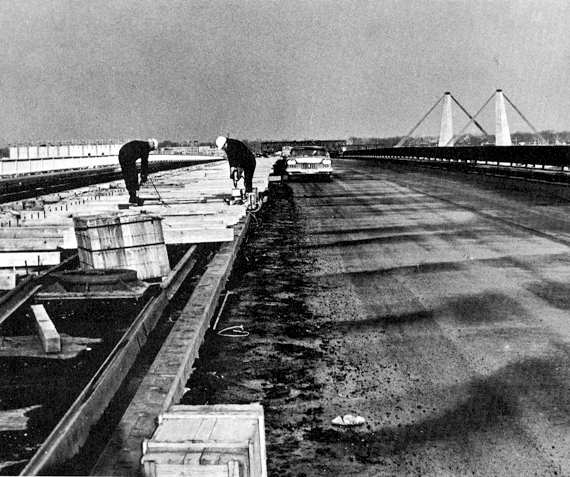 Of German design, the 2265 foot bridge ran in a straight line between Mackay Pier and Île Sainte-Hélène. The bridge was 94 feet wide, with 38 feet reserved for vehicular traffic, 22 feet for pedestrians, and 32 feet set aside for the Expo-Express rapid transit system.
Of German design, the 2265 foot bridge ran in a straight line between Mackay Pier and Île Sainte-Hélène. The bridge was 94 feet wide, with 38 feet reserved for vehicular traffic, 22 feet for pedestrians, and 32 feet set aside for the Expo-Express rapid transit system.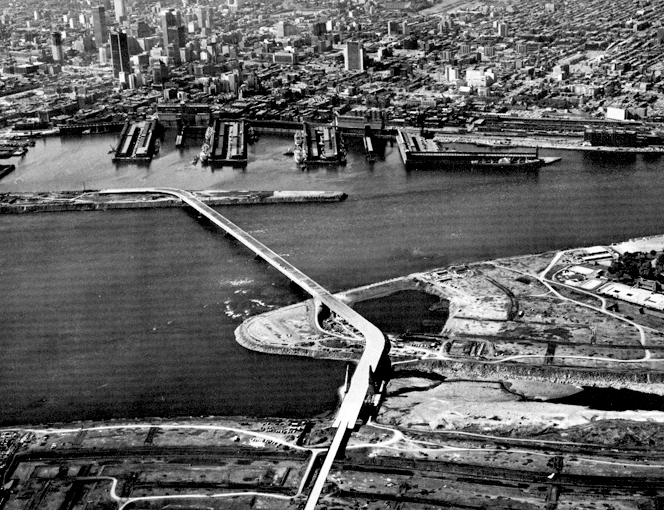 While cars were not permitted on the Expo site, trucks used the Concordia Bridge to replenish food supplies and other necessities after hours.
While cars were not permitted on the Expo site, trucks used the Concordia Bridge to replenish food supplies and other necessities after hours.Pont des Îles
 Pont des Îles was opened two years before the start of Expo 67. Connecting Île Sainte-Hélène and Île Notre-Dame, the bridge played a crucial role in enabling access to the jobsites that were operating at a furious pace preparing for Expo.
Pont des Îles was opened two years before the start of Expo 67. Connecting Île Sainte-Hélène and Île Notre-Dame, the bridge played a crucial role in enabling access to the jobsites that were operating at a furious pace preparing for Expo.Pont des Îles' conceptors were faced with certain constraints: structures for the bridge were to be no higher than its deck, and only one pier was allowed. Moreover, this pier had to be set in the centre of the structure.
The bridge was supported by 36 steel cables attached to two reinforced-concrete double towers in the middle. This gave Pont des Îles an unusually elegant profile.
Like the Pont de la Concorde (of which it was an extension) Pont des Îles had reserved lanes for the Expo-Express and pedestrian traffic...
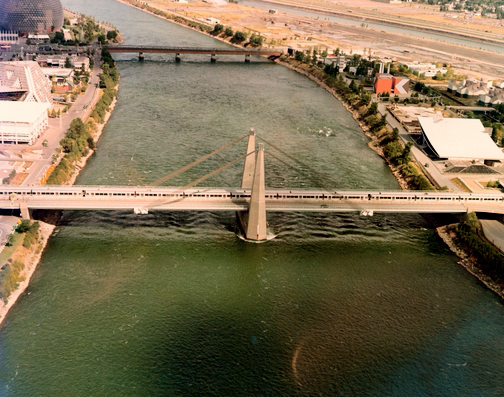 images: (1, 2, 4, 5) personal collection (montreal '66)
images: (1, 2, 4, 5) personal collection (montreal '66)
(3, 6, 7) memorablemontreal.com
Subscribe to:
Posts (Atom)
